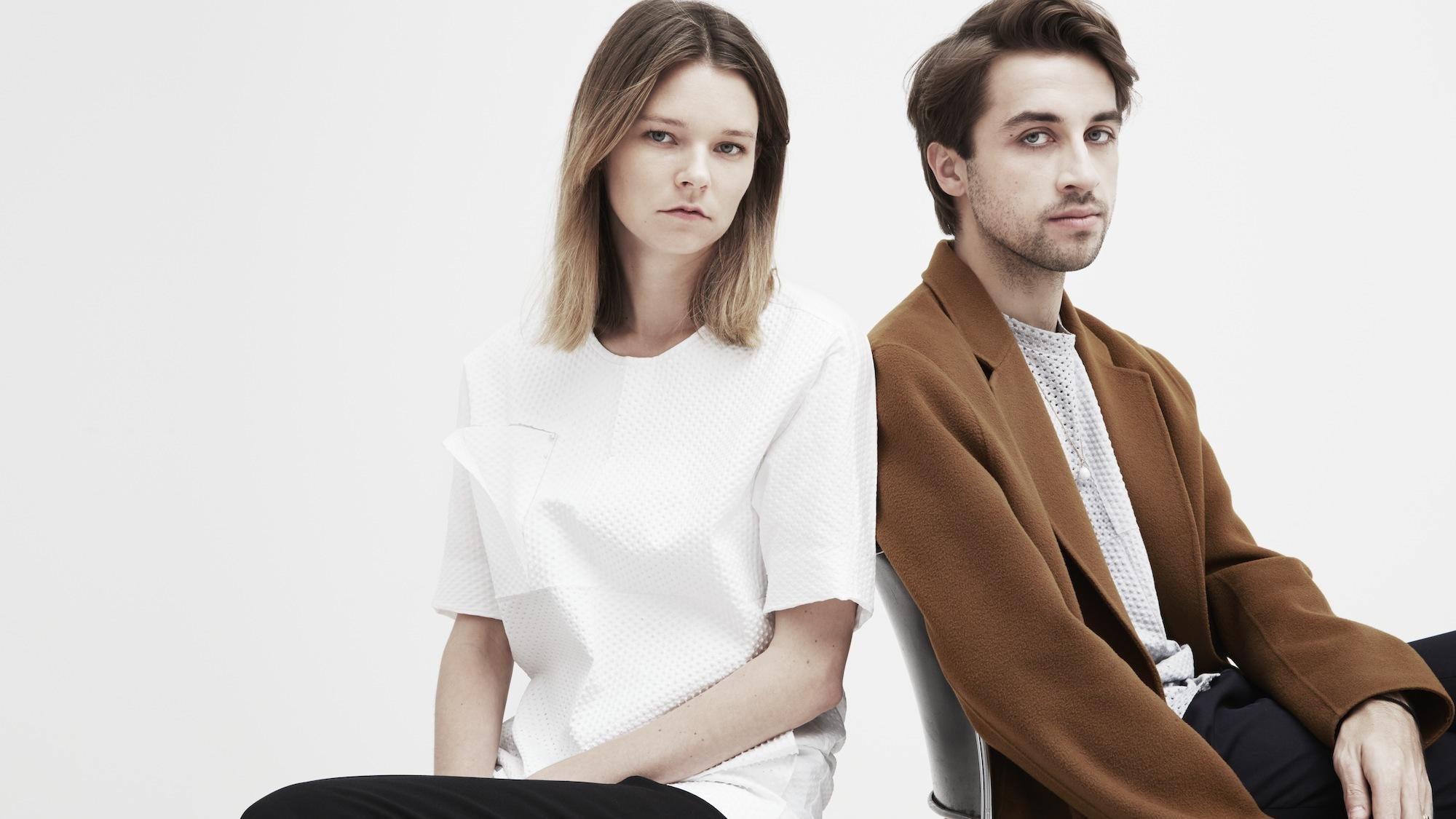New York-based designers Beckett Fogg and Piotrek Panszczyk make electric clothes to live your best life in. Founded in 2013, their brand Area has presented eight full collections to date, featuring transparent lilac trench coats, rose-gold satin disco dresses, and head-to-toe crushed velvet looks in Ziggy Stardust-worthy metallics. Taking the unique fabrics they develop as their starting point, they have created an aesthetic universe that sits somewhere between the iridescent energy of a Hype Williams music video and the athletic silhouettes of a Helmut Newton image. Last year, Beckett and Piotrek were selected as finalists for the CFDA/Vogue Fashion Fund and this year they will present their first-ever runway show during New York Fashion Week. Here, Beckett and Piotrek explain how they started and grew their brand in a saturated and fast-changing fashion market, and how you can too.
Who we are…
Piotrek and I originally met at Parsons where we were both getting our MFA in Fashion Design. We come from opposite places, I (Beckett) am from Lexington, Kentucky and Piotrek is from Poland and raised in Holland. Our brand, Area, explores perceptions of femininity and conceptualized ideas of glamour — focusing on textile development to create a visual identity.
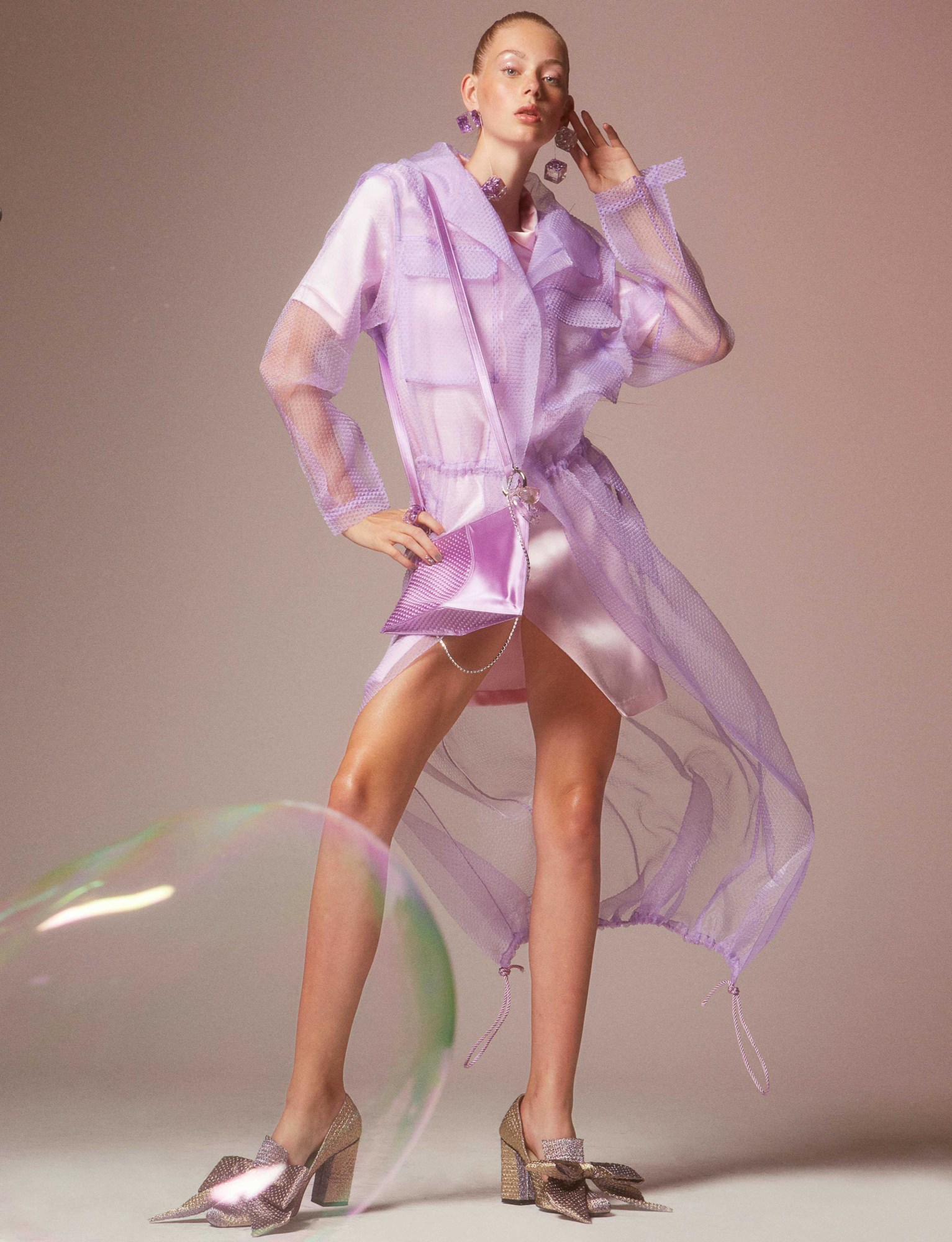
What we do and why we do it…
Piotrek has a more traditional fashion background, with formal training in pattern making and fashion design. He grew up in Poland until the age of five, when it was still a Communist country, and lived with his mother and aunts. They were all captivated by beauty and fashion, but were unable to dress how they desired unless they made the clothing themselves. As a result, Piotrek was exposed to pattern making and sewing at a very young age. My background is in architecture, which is what I studied in college at UVA. I moved to New York after college and was drawn to the new MFA course at Parsons, so switched my design focus and that is where we met. We come from completely different places, but neither of us grew up in a fashion capital, so we found common interest in our exposure to desire and aspiration as it relates to fashion.
A day in our life…
Our day-to-day life varies depending on the time of year. We could be researching in libraries, developing textiles, pattern making, or sampling. Usually it’s a combination of these things. We have developed areas that each of us focuses more on, however everything is a constant dialogue between us, which has been so important. There is never a major decision made by one person, it’s really a discussion.
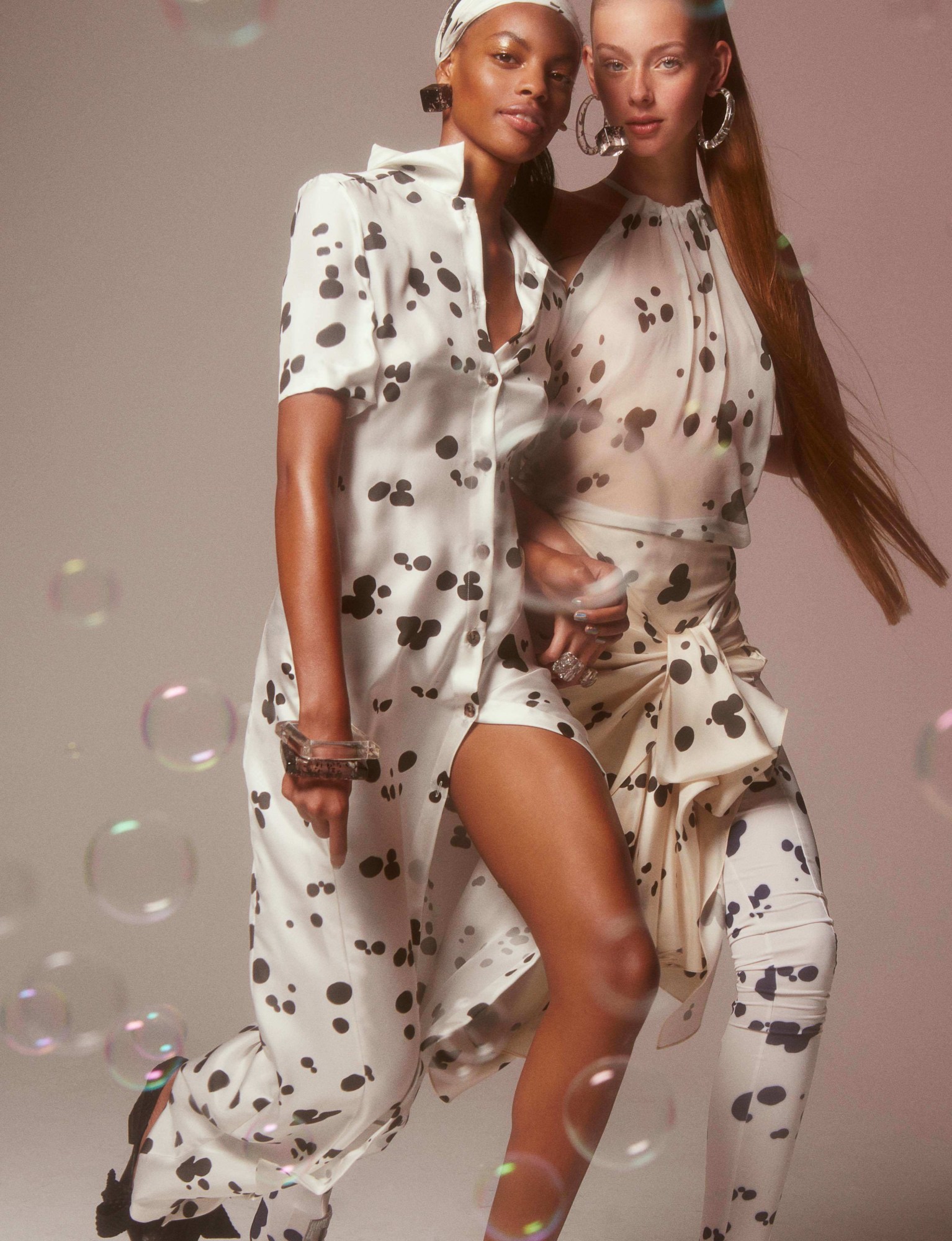
How we got here…
We take everything season by season and try not to plan too far ahead — it’s really impossible to assume that anything is definitely going to happen, so we try to respond to everything as it comes. It’s a risky strategy, but I think the industry is in such a precarious place that it’s really difficult to project anything accurately. Our strategy has been to deliver a consistent message and visual identity that is recognizable. It is such a saturated industry, and it’s so easy to get overlooked even if you are doing something amazing. So we definitely take advice and criticism, but stay true to our original intentions for the brand. It’s easy to get swayed in a certain direction, especially when you get advice on how to make everything “commercial.” We were very careful about this kind of feedback, and now we have had enough time to develop Area that the commercial aspect of the brand is evolving more naturally without feeling forced. The CFDA/Vogue Fashion Fund judges were really helpful in this aspect — their feedback was honest and productive, and I think we have grown so much as a brand because of it.
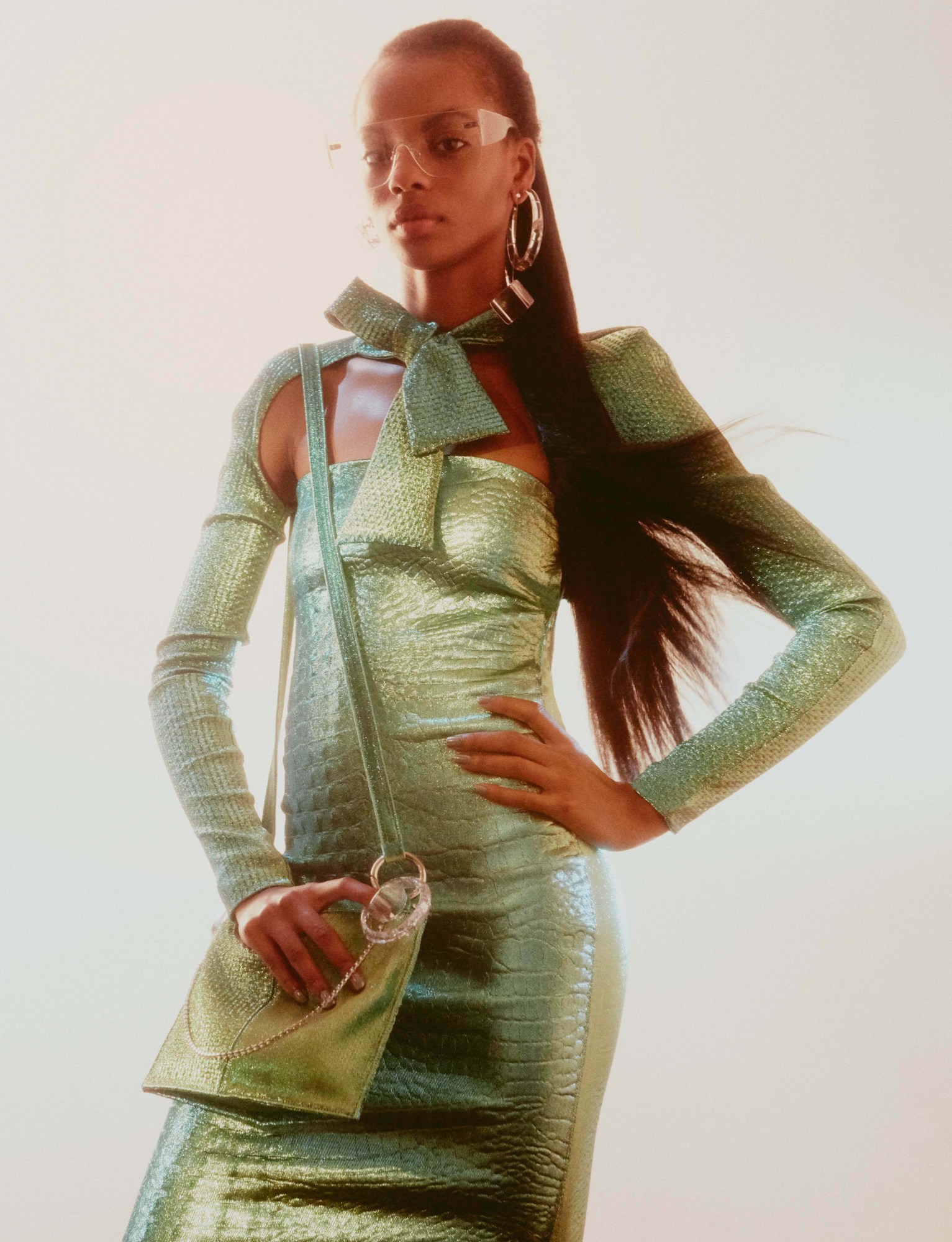
The moment that made us…
Finding a solid team from the beginning, not just in our studio but our network as well. Our stylist Clare Byrne and photographer Charlotte Wales have been a crucial part of our development from the very beginning.
What we wish we knew then that we know now…
Developing a brand takes a lot of time. Everyone told us it would, but we thought it would be a much quicker process. However, we learned that process is important, we really needed that time to develop. Failure and getting turned down sucks at the time, but when things don’t happen you are really forced to get creative and figure out how to make it happen in a different and better way.
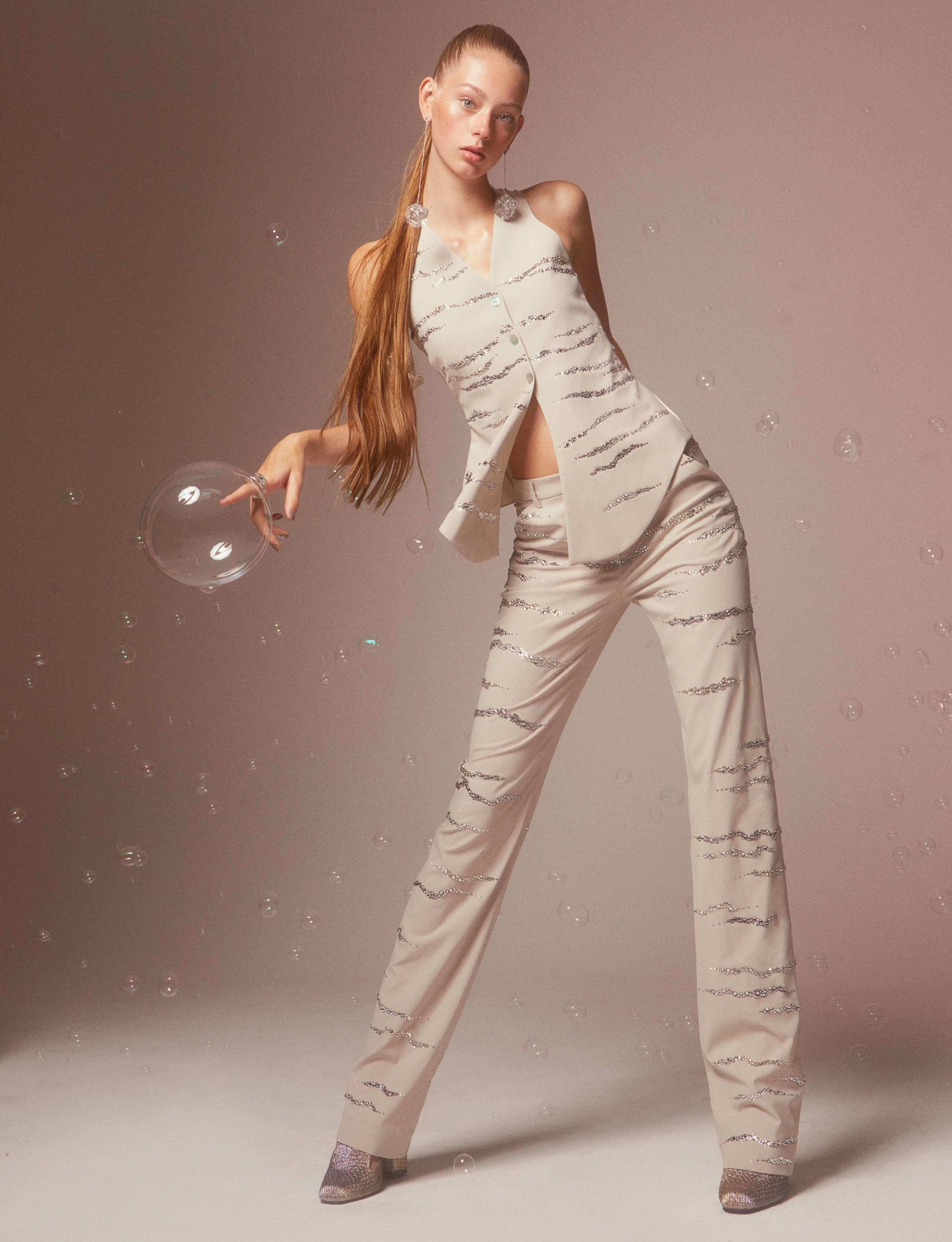
Our advice for aspiring designers…
I don’t think college is necessary for everyone, but it is necessary for some. You have to learn the foundations somehow, unless you are very, very rich and just hire people to know them for you. Which is definitely a route that has worked for some people in the past. We formed our connections and network through friends that we started working with in school, who shared a similar aesthetic and vision with us. If you build a tight network of people who have similar priorities, it’s easy for everyone to build on each other’s successes as time goes by. And make sure you have a strong network of support both internally and externally: a strong team you work with every day, and industry connections that can help guide your brand. Another piece of advice is to take advantage of resources immediately around you — libraries, museums, and people. Online research is important but physical research and development should never be fully replaced. I think a brand’s aesthetic must really come from an authentic place. It should feel natural, and the company structure should build around this, so your environment feeds into the aesthetic.
We’re excited by tomorrow because…
We are planning our first runway show for New York Fashion Week, and we’re really excited about that. It’s a big step for us!
Related: How to become a creative producer by Sylvia Farago
Credits
Text Beckett Fogg and Piotrek Panszczyk
Campaign photography Charlotte Wales
Campaign styling Clare Byrne
